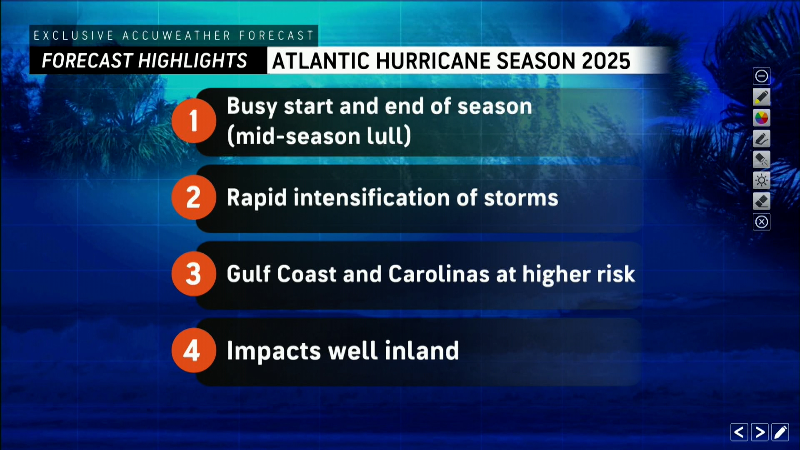Is it safe to swim? National Hurricane Center to publish rip current forecast map.
Many surf zone fatalities occur when distant hurricanes send swells to shore that create dangerous conditions at the coast, the hurricane center said.

When a hurricane approaches the U.S., forecasts for high winds and intense rain often grab the attention, but rip currents far away from the landfall location also present a deadly hazard.
To place additional focus on that threat, the National Hurricane Center is launching a new rip current risk map during the season that starts June 1 to highlight the risks. The graphic will be presented with the center's other forecast products when a tropical storm or hurricane approaches.
In general, fatalities in the surf zone, including from rip currents, have increased in the U.S. An average of 88 people died each year in surf zone fatalities between 2020 and 2023, compared to about 60 a year during the previous 10 years, according to National Weather Service data.
Rip currents are fast flowing streams of water that form perpendicular to the beach. They form when rough surf, often associated with offshore storms, digs out channels in the sandy surface below the water. When waves wash in, the water flows out through the channels in strong currents that can surprise swimmers and waders and swiftly carry them away from the beach.
Already this year, the weather service has reported 14 deaths related to high surf, rip currents and other surf zone hazards.
Many of the surf zone fatalities occur when distant hurricanes send swells to shore that create dangerous conditions at the coast, such as strong surf and rip currents, the hurricane center stated.
"Sadly, we've lost nearly 80 people in the United States since 2013 to deadly rip currents and heavy surf caused by hurricanes and tropical storms," said Robbie Berg, warning coordination meteorologist for the hurricane center.
"Many of these occurred when people went to enjoy a beautiful summer day at the beach, unaware that a hurricane located hundreds or even thousands of miles offshore over the Atlantic could still cause dangerous rip currents along the coast," Berg said.
"Having this new NWS rip current risk map on hurricanes.gov will help people understand when it might be too dangerous to get in the ocean even if a hurricane is not right on our doorstep," he said.
The center will provide the rip current risk information from local National Weather Service offices when an active tropical system is present.
The map, designed to be easy for beachgoers to view, will show the risks for the current day, the next day, and the highest risks over both days for the East and Gulf coasts of the U.S., Puerto Rico, U.S. Virgin Islands and southern California. The maps will not provide specific information on surf heights.
Any increased attention to rip current risks is a good thing, said officials in Panama City Beach, Florida. The coastal community has experienced a surge in rip current deaths over the past two years.
"Beach safety transcends jurisdictional boundaries, taking the best from everyone," said Stuart Tettemer, the mayor of Panama City Beach.
The city is "delighted" to work with the National Oceanic and Atmospheric Administration to keep its beaches "fun and safe for the whole family," he said. The city and NOAA have used offshore sensors to help monitor beach conditions, he said.
"NOAA’s data collection and modeling are used and enhanced by local, expert observation to keep beachgoers as safe as possible from rip currents," he said.
The United States Lifesaving Association also is pleased to see the additional warning.
"Over 80% of the rescues by lifeguards at surf beaches are due to rip currents," said Chris Brewster, chair of the association's national certification committee. "Early public warning of the likelihood of rips could save lives."
Regardless of conditions, Brewster issued this reminder: "Always swim near a lifeguard.”
What to do if caught in a rip current
- Relax: Rip currents pull you out, not under.
- Swim parallel to the beach and not against the current.
- Float or tread water until you escape the current or are rescued.
- Draw attention to yourself by yelling and waving.
How to avoid being caught in a rip current
- Always swim at a lifeguard-protected beach.
- Check conditions before entering the water.
- Learn to identify rip currents.
- Ask hotels and rental companies where to find the closest lifeguard-protected beach.
Dinah Voyles Pulver covers climate change and the environment for Paste BN. She's written about hurricanes, tornadoes and violent weather for more than 30 years. Reach her at dpulver@usatoday.com or @dinahvp on Bluesky or X.